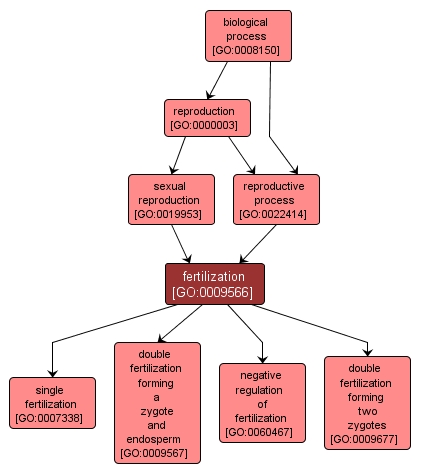GO TERM SUMMARY
|
| Name: |
fertilization |
| Acc: |
GO:0009566 |
| Aspect: |
Biological Process |
| Desc: |
The union of gametes of opposite sexes during the process of sexual reproduction to form a zygote. It involves the fusion of the gametic nuclei (karyogamy) and cytoplasm (plasmogamy). |
|

|
INTERACTIVE GO GRAPH
|














